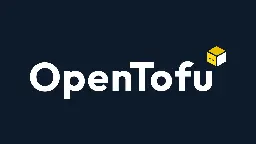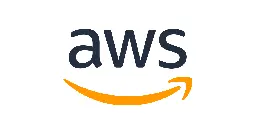
-
OpenTofu 1.6.0 released
opentofu.org OpenTofu is going GA | OpenTofuToday is a big day for OpenTofu! After four months of work, we're releasing the first stable release of OpenTofu, a community-driven open source fork of Terraform. OpenTofu, a Linux Foundation project, is now production-ready. It’s a drop-in replacement for Terraform, and you can easily migrate to i...

The first stable release of OpenTofu (the fork of Terraform) has now been released. This release is lagging behind the current 1.6.6 release of Terraform, but it is a big first step. This release is backwards compatible with Terraform 1.6.0 and includes a few new features.
The big new features:
-
New AWS ca-west-1 (Calgary) region now available
aws.amazon.com The AWS Canada West (Calgary) Region is now available | Amazon Web ServicesUpdate: December 20, 2023 — The list of services available today at launch is now updated with AWS Artifact, AWS Cloud Control API, AWS Directory Services, EC2 Image Builder, and AWS Transit Gateway for a new total of 70 services. Today, we are opening a new Region in Canada. AWS Canada West ...

Amazon has finished setting up their second Canadian AWS region. This is big news for anyone in western Canada as regional public cloud coverage has been non-existent, until now. Previously, your only options had been eastern Canada (Montreal) and eastern Canada (Toronto). This is also big news for data sovereignty on AWS. Previously, you didn't have a option for a Canadian disaster recovery region. AWS only had a single Canadian region (ca-central-1), so your DR site would need to be in another country.
To use this region, you will need to enable the region under your billing dashboard as new regions are not enabled by default. This region has 3 AZs, which would be required if you do proper clustering. For the longest time, the ca-central-1 (Montreal) region only had 2 AZs. I remember getting asked in a job interview how many AZs ca-central-1 had and I correctly answered 2. They were convinced all regions had a minimum of 3 AZs and I got docked points. I am still fuming.
Warning: Advanced technical networking and location ramblings below
The new region has 2 - 100G connections to the Calgary Internet Exchange Point IXP (YYCIX). They terminate at Equinix CL-3 and DataHive. I suspect the first AZ is the standalone AWS datacentre just off of Glenmore east whose location had leaked. The second one is probably located west downtown (just outside of the
10025 year flood plain) close to DataHive. The DataHive datacentre is tiny so co-locating an entire Amazon AZ is not happening. Downtown Calgary has plenty of cheap office space for a datacentre conversion.The third AZ is probably co-located at Arrow DC2 south of the airport or eStruxture CAL-2 up past the airport. Co-location would explain why there isn't a third connection to YYCIX.
As this region is directly connected to YYCIX, this means traffic will not be routing down to the Seattle IXP, unless you yourself are on a local ISP (Shaw) that doesn't connect to YYCIX yet. I didn't believe this rumour was still true, but I did some digging and I am not seeing a YYCIX connection registered for Shaw.
-
OpenTF has been renamed OpenTofu
It looks like the 'TF' part of OpenTF was too similar to Terraform and they have come up with a new name for the project. In addition, the project is now a part of the Linux Foundation and they have a new website.
https://opentofu.org/
-
AWS is having issues
us-east-1 and us-west-2 regions are experiencing networking issues and it also having an affect on a number of other cloud services that rely on those regions.
The number of AWS services this is affecting is growing and will probably affect the majority of their services to some degree.
It isn't a full network outage, but instead a sporadic one (too much load?). As in, one ECS task will be able to register itself with the application load-balancer, while another one will not. If you have an automated environment, this is causing rolling failures right now.
This is impacting one of my clients greatly as those are their primary and DR regions. We are considering deploying DR in a 3rd region, but it could take hours to replicate their database.
-
OpenTF fork is now live
The Github repository for the community fork of Terraform (called OpenTF) has been made public. If you use any third-party tooling (SpaceLift, Scalr, Env0, Terraspace, Terragrunt, Atlantis, Digger, etc.) you will probably want to plan a switch to using OpenTF instead of Terraform to remain license compliant. Well, it is actually more about the third-party tool's compliance. From this point forward, their documentation can't tell you to install a version of Terraform higher then 1.5.5. You will start to see them transition over to suggesting OpenTF instead, once a stable release is available.
OpenTF plans to remain feature compatible with Terraform, but I could see, in the future, new features being added to OpenTF that third-party tool providers require.
I wouldn't compile and use the current OpenTF code for production or even development use yet, but if you wanted to contribute to the project, now is your chance.
https://github.com/opentffoundation/opentf
The first stable release should be coming by October 1st. https://github.com/opentffoundation/opentf/milestone/3
-
AWS CloudFormation finally, indirectly added looping support
CloudFormation is the most featureless of the Infrastructure-as-Code template languages. It is miles behind Terraform, Azure ARM/Bicep, and Google Cloud Deployment Manger. I don't think there has been any direct improvement with the language syntax since the introduction of YAML support over a decade ago. The core syntax and functionality of CloudFormation have been frozen for many years and there is no sign that will ever change. From the outside, it appears the CloudFormation team has been under-resourced and left to rot.
Support for new resource types and properties can take up to 2 years to get implemented. If you are tied to using CloudFormation and need support for a new resource type or property, you are left with creating and maintaining custom resource types (Lambda Functions).
All recent language improvements have been in the AWS::LanguageExtensions transform, which is just an AWS manage CloudFormation Macro, and it was only release last September. CloudFormation Macros are Lambda functions that will run against a template before it is processed. They allow you to interpret your own syntax changes and transform the template before deployment.
Before this looping function support, AWS::LanguageExtensions transform didn't contain any functionality that made it compelling to use. If you were already aware of how to extend CloudFormation, you probably already had a collection of CloudFormation Macros that went above and beyond the functionality of the AWS::LanguageExtensions transform.
Currently, if you want to do anything more advanced than what is built-in, you have to create and maintain your own CloudFormation Macros (more Lambda Function). They are a pain to debug, add a lot more complexity, and increase your maintenance workload. Having AWS provide a macros that greatly extends CloudFormation into something usable would be awesome. We just aren't there yet, but this update shows there is some life left in the corpse.
-
Digger - A scalable and secure alternative to Atlantis for Terraform Automation and Collaboration
I have been researching the current state of Terraform automation and collaboration tools on behalf of a client and this is a new one that has emerged as a possible option. The client needs something to help manage their many pipelines and state files, but they are not big enough to need a full enterprise Terraform management platform such as Spacelift, Scalr, or Env0. Atlantis was on the short list, but it is showing its age and this is looking to be a better product and a good middle ground solution.
With the recent Hashicorp licensing change, this product may also be impacted. The developers claims they are not using any Hashicorp code and are not affected, but their code does execute a terraform command process which might still run afoul of the "embedded" part of Hashicorp's BSL "Additional Use Grant". Since they are also the creators of the first fork of the MPL licensed Terraform code-base, they will surely be under the watchful eyes of Hashicorp's lawyers.
-
Hashicorp's license change and what it means for the Terraform community
www.hashicorp.com HashiCorp adopts Business Source LicenseHashiCorp adopts the Business Source License to ensure continued investment in its community and to continue providing open, freely available products.

The recent change in licensing across all Hashicorp products shows that Hashicorp is not able to or willing to compete with competitors to their enterprise offerings. Even though they officially don't state it, the change is targeted at competitors such as Spacelift, Scalr, and Env0. Those competitors only came to be to fill in gaps that remained after and because of Hashicorp's lacklustre and overpriced Terraform Cloud/Enterprise products.
The Business Source License (BSL) 1.1 is an open source license, but it has additional vague wording designed to prevent competitors from building competing products using the source code. The problem in this situation is that it also extends to additional products produced by the code owner (Hashicorp). This means even an open-source (non-commercial) competitor to the separate Terraform Enterprise product is not allowed to use the Terraform command, Terraform code-base or any other Hashicorp code-base. Anyone who does any form of Terraform automation, that they then provide to their clients for production use, will now need to ensure they are not seen as a competitor to a Hashicorp product.
Spacelift has already tried to reassure their customers that they are going to work on a solution going forward.
Even though Hashicorp claims to be supportive of the spirit of open source software, they aren't supportive of open collaboration and they have been resistant to upstream contributions from the community. This resistance has created an environment where new enhancement toolsets were created then evolved into competing products with their enterprise offering. Now that they have changed their licensing, this will further exacerbate the issues. A fork of the pre-BSL licensed Terraform code-base has already appeared and if it or another fork gets enough support from the community, we could see the official Terraform toolset being replaced as the defacto Infrastructure-as-Code platform in use today.
I myself have created command wrappers and managements to improve on the limitations of the Terraform command and the lack of state file drift management. So I will be watching what happens closely and be willing to offer my contributions to any potential competitor.
Additional discussions:
Hacker News: HashiCorp adopts Business Source License
Hacker News: OpenTerraform – an MPL fork of Terraform after HashiCorp's license change
-
Anyone have experience setting up an environment on Beanstalk?
I'm following a tutorial for creating docker containers, and it is having me go through the AWS beanstalk to create the environment to host the app, but I can't get the environment all the way there. Everytime I get some error about an instance profile I think it was called, and I've tried creating users, roles, and giving the roles the permissions for the beanstalk permissions, but it's still giving me errors. Does anyone know what I should be doing different?
- cycode.com VS Code’s Token Security: Keeping Your Secrets… Not So Secretly
This is the full story of the vulnerability we have discovered within Visual Studio Code (VS Code) concerning the handling of secure token storage. While designed for isolated storage for each extension, this vulnerability presents...

cross-posted from: https://programming.dev/post/1562654
> FYI to all the VS Code peeps out there that malicious extensions can gain access to secrets stored by other VS Code extensions as well as the tokens used by VS Code for Microsoft/Github. > > I really don’t understand how Microsoft’s official stance on this is that this is working as intended… > > If you weren’t already, be very careful about which extensions you are installing.
-
Recent DevOps related releases for Aug 8th
Aqua Trivy 2.9.0
Trivy is a comprehensive and versatile security scanner. Trivy has scanners that look for security issues, and targets where it can find those issues.
Tags: Security, Vulnerability Scanner, Monitoring
Website - Documentation - Github Home - Github Release
CoreDNS v1.11.0
CoreDNS is a fast and flexible DNS server. The key word here is flexible: with CoreDNS you are able to do what you want with your DNS data by utilizing plugins.
Tags: DNS, Kubernetes
Website - Documentation - Github Home - Github Release
Go v1.21
Go is an open source programming language that makes it easy to build simple, reliable, and efficient software.
Tags: Programming Language, Golang
Website - Documentation - Github Home - Release
Hashicorp Consul v1.16.x
Consul is a distributed, highly available, and data center aware solution to connect and configure applications across dynamic, distributed infrastructure.
Website - Documentation - Github Home - Github Release
OpenSearch 2.9.0
OpenSearch is a community-driven, open source fork of Elasticsearch and Kibanasearch. Elasticsearch can be used to search any kind of document. It provides scalable search, has near real-time search, and supports multitenancy. Kibana provides visualization capabilities on top of the content indexed on an Elasticsearch cluster.
Tags: Search Engine, Dashboards, Monitoring
Website - Documentation - Downloads - Github Home - Github Release
Podman v4.6.0
Podman (the POD MANager) is a tool for managing containers and images, volumes mounted into those containers, and pods made from groups of containers. Podman runs containers on Linux, but can also be used on Mac and Windows systems using a Podman-managed virtual machine.
Tags: Docker, Containers, Command-Line
Downloads - Github Home - Github Release
Prometheus 2.46.0 / 2023-07-25
Prometheus, a Cloud Native Computing Foundation project, is a systems and service monitoring system. It collects metrics from configured targets at given intervals, evaluates rule expressions, displays the results, and can trigger alerts when specified conditions are observed.
Tags: Monitoring, Observability, Dashboards, Metrics, Alerting
Website - Documentation - Downloads - Github Home - Github Release
-
AWS will charge for public IPv4 addresses soon
www.theregister.com AWS to charge customers for public IPv4 addresses from 2024Perhaps that'll focus your minds on speeding up your adoption of IPv6, eh?

I was wonder how cloud providers seemed to have a bottomless pits of IPv4 addresses and weren't more resistant to handing them out like candy. They should be charging more for this scarce resource. AWS was, until now, the only cloud provider to not charge for static public IPv4 addresses, as long as the elastic IP is in use.
I fully expect there will be more pressure in the future to have cloud customers to use dual-stack (both IPv4 and IPv6) or IPv6 only on externally facing services and pool services behind application load-balancers or web application firewalls (WAFs). WAFs should support sending incoming IP4v and IPv6 traffic to an IPv6 only server.
Looking at Imperva's (a WAF) documentation that should work. I haven't tested this, so I might just have to do that.
>By default Imperva handles load balancing of IPv4 and IPv6 as follows: > > - IPv4 traffic is sent to all servers. > - IPv6 traffic is only sent to the servers that support IPv6. > - However, if all your servers that support IPv6 are down, then IPv6 traffic is sent to your IPv4 servers. > > Imperva also enables you to configure load balancing so that IPv6 traffic is only sent to IPv6 servers and IPv4 traffic is only sent IPv4 servers. Alternatively, you can configure that Imperva sends traffic to any origin server, regardless of whether it is IPv4 or IPv6.
https://docs.imperva.com/bundle/cloud-application-security/page/more/ipv6-support.htm
-
OpenTelemetry metrics ingestion into Prometheus
last9.io Ingest OpenTelemetry metrics with Prometheus natively | Last9Native support for OpenTelemetry metrics in Prometheus

Prometheus will soon include support for ingesting OpenTelementry metrics into the platform. Even if you understood all of those words, you might be asking, "so what?". This is a big deal for observability (fancy name for monitoring) as it is getting us one step closer to using a single agent to collect all observability telemetry (logs, metrics, traces) from servers.
Currently you would need to use something like fluentbit/fluentd to collect logs, Prometheus exporter for metrics, and OpenTelemetry for traces. There are many other tools you might use instead, but these are my current picks. If you are running VMs or physical servers, that means installing/managing three different pieces of software to cover everything. If you are running containers, that could mean up to 3 separate sidecar containers per application container within the same group/task/pod.
OpenTelementry is being positioned as a one-stop-shop for collecting and working with the three streams of telemetry data (logs, metrics, traces). Currently only trace support is production ready, but work is well under way to getting support for logs and metrics to be the ready for prime time.
There has been huge moves across the industry to add support for working with OTLP (OpenTelemetry Protocol) data streams. Prometheus is becoming the most popular backend for storing and alerting on metric data. The current blocker has been native support for OTLP ingestion and incompatible metric naming.
According to this blog post, we are close to getting these 2 issues resolved.
https://last9.io/blog/native-support-for-opentelemetry-metrics-in-prometheus/
-
AWS ECS Fargate adds streaming image support
If you use Fargate and have Linux x86 tasks with images over 250Mb, you might be interested in this new feature that should shave time off of your task deployments.
One of our clients had just switch all of their tasks over to ARM to cut costs, but they always want a faster deployment pipeline. I might have to give this a try and see if there is a big benefit.
I suspect the networking will become the main source of delay as i remember it taking 1-2 minutes to finish.
-
Tools for security scanning of images and containers
The following are some tools you can use to perform security scans on your container images and running containers. These are useful for performing manual audits on existing container images, scanning images as part of a build pipeline, or actively monitoring containers running in production. These can all be implemented for free.
Docker Bench for Security
https://github.com/docker/docker-bench-security
The Docker Bench for Security is a script that checks for dozens of common best-practices around deploying Docker containers in production. The tests are all automated, and are based on the CIS Docker Benchmark v1.5.0.
Aquasecurity Trivy
https://github.com/aquasecurity/trivy
Trivy is a comprehensive and versatile security scanner. Trivy has scanners that look for security issues, and targets where it can find those issues. You can use https://github.com/aquasecurity/trivy-action to perform scans within your Github Actions workflows.
Anchore Grype
https://github.com/anchore/grype
A vulnerability scanner for container images and filesystems. You can use https://github.com/anchore/scan-action to perform scans within your Github Actions workflows.
Clair
Clair is an open source project for the static analysis of vulnerabilities in application containers (currently including OCI and docker). AWS ECR basic scanning uses this project as its backend. You can use https://github.com/quay/clair-action to perform scans within your Github Actions workflows.
Sysdig Falco
https://github.com/falcosecurity/falco
Falco is a cloud native runtime security tool for Linux operating systems. It is designed to detect and alert on abnormal behaviour and potential security threats in real-time. Generally used for active monitoring with Kubernetes clusters, but you can also use it with ECS Fargate.
There are others out there, but these are ones I remember at the moment. If you know of any others, please add them.
-
Recent DevOps related releases for July 16
Github CLI GitHub CLI 2.32.0
gh is GitHub on the command line. It brings pull requests, issues, and other GitHub concepts to the terminal next to where you are already working with git and your code.
Tags: Github, Git, Management, Version Control, Command-Line
Website - Documentation - Github Home - Github Release
Gradle 8.2
Gradle is a build tool with a focus on build automation and support for multi-language development. If you are building, testing, publishing, and deploying software on any platform, Gradle offers a flexible model that can support the entire development lifecycle from compiling and packaging code to publishing web sites. Gradle has been designed to support build automation across multiple languages and platforms including Java, Scala, Android, Kotlin, C/C++, and Groovy, and is closely integrated with development tools and continuous integration servers including Eclipse, IntelliJ, and Jenkins.
Tags: Deployment, CI/CD
Website - Documentation - Releases - Github Home
Microsoft Azure CLI Azure CLI 2.50.0
Bicep is a Domain Specific Language (DSL) for deploying Azure resources declaratively. It aims to drastically simplify the authoring experience with a cleaner syntax, improved type safety, and better support for modularity and code re-use. Bicep is a transparent abstraction over ARM and ARM templates, which means anything that can be done in an ARM Template can be done in Bicep.
Tags: Azure, System Administration, Management, Command-Line
Installation - Reference - Github Home - Github Release
OpenTelemetry Collector v0.81.0
The OpenTelemetry Collector offers a vendor-agnostic implementation on how to receive, process and export telemetry data. In addition, it removes the need to run, operate and maintain multiple agents/collectors in order to support open-source telemetry data formats (e.g. Jaeger, Prometheus, etc.) to multiple open-source or commercial back-ends.
Tags: Monitoring, Observability, OpenTelemetry, Collector, Traces, APM, Metrics, Logs
Website - Documentation - Github Home - Github Release
Podman Desktop v1.2.0
Podman Desktop is a graphical interface that enables application developers to seamlessly work with containers and Kubernetes.
Tags: Docker, Containers, Desktop
Website - Documentation - Downloads - Github Home - Github Release
SigNoz v0.23.0
Monitor your applications and troubleshoot problems in your deployed applications, an open-source alternative to DataDog, New Relic, etc.
Tags: Monitoring, Observability, OpenTelemetry, Traces, APM, Metrics, Logs
Website - Documentation - Github Home - Github Release
Terraform Provider - AWS v5.8.0
The AWS Provider allows Terraform to manage AWS resources. Terraform is a tool for building, changing, and versioning infrastructure safely and efficiently.
Tags: AWS, Orchestration, Programming, Terraform
Documentation - Github Home - Github Release
Terraform Provider - AzureRM v3.65.0
The AzureRM Terraform Provider allows managing resources within Azure Resource Manager. Terraform is a tool for building, changing, and versioning infrastructure safely and efficiently.
Tags: Azure, Orchestration, Programming, Terraform
-
Recent DevOps related releases for June 26th
Prometheus 2.45.0 / 2023-06-23
Prometheus, a Cloud Native Computing Foundation project, is a systems and service monitoring system. It collects metrics from configured targets at given intervals, evaluates rule expressions, displays the results, and can trigger alerts when specified conditions are observed.
Tags: Monitoring, Observabilty, Dashboards, Metrics, Alerting
Website - Documentation - Downloads - Github Home - Github Release
SigNoz v0.21.0
Monitor your applications and troubleshoot problems in your deployed applications, an open-source alternative to DataDog, New Relic, etc.
Tags: Monitoring, Observability, OpenTelemetry, Traces, APM, Metrics, Logs
Website - Documentation - Github Home - Github Release
Terraform Provider - AWS v5.5.0
The AWS Provider allows Terraform to manage AWS resources. Terraform is a tool for building, changing, and versioning infrastructure safely and efficiently.
Tags: AWS, Orchestration, Programming, Terraform
-
DevOps related releases for June 21th
Fluent Bit 2.1.5
Fluent Bit is a fast Log Processor and Forwarder for Linux, Windows, Embedded Linux, MacOS and BSD family operating systems.
Tags: Monitoring, Observability, Logs
Website - Documentation - Github Home - Github Release
Hashicorp Vault v1.14.0
Vault is a tool for securely accessing secrets. A secret is anything that you want to tightly control access to, such as API keys, passwords, certificates, and more. Vault provides a unified interface to any secret, while providing tight access control and recording a detailed audit log.
Tags: Security, Secret Store
Website - Documentation - Downloads - Github Home - Github Release
OpenTelemetry Collector v0.80.0
The OpenTelemetry Collector offers a vendor-agnostic implementation on how to receive, process and export telemetry data. In addition, it removes the need to run, operate and maintain multiple agents/collectors in order to support open-source telemetry data formats (e.g. Jaeger, Prometheus, etc.) to multiple open-source or commercial back-ends.
Tags: Monitoring, Observability, Collector, Traces, APM, Metrics, Logs
-
DevOps related releases for June 20th
Ansible 2.15.1
Ansible is a radically simple IT automation system. It handles configuration management, application deployment, cloud provisioning, ad-hoc task execution, network automation, and multi-node orchestration. Ansible makes complex changes like zero-downtime rolling updates with load balancers easy. More information on the Ansible website.
Releases: https://github.com/ansible/ansible/releases
Hashicorp Vault 1.13.4
Vault is a tool for securely accessing secrets. A secret is anything that you want to tightly control access to, such as API keys, passwords, certificates, and more. Vault provides a unified interface to any secret, while providing tight access control and recording a detailed audit log.
Downloads: https://developer.hashicorp.com/vault/downloads?product_intent=vault
Node.js 20.3.1
Node.js is an open-source, cross-platform JavaScript runtime environment.
Downloads: https://nodejs.org/en/download
Terraform Provider - Google (GCP) 4.70.0
The Terraform Google provider is a plugin that allows Terraform to manage resources on Google Cloud Platform. Terraform is a tool for building, changing, and versioning infrastructure safely and efficiently.
Documentation: https://registry.terraform.io/providers/hashicorp/google/latest/docs Releases: https://github.com/hashicorp/terraform-provider-google/releases
-
How to stop storing credentials in cloud apps
Storing usernames, passwords, IDs, and secrets within a text-based config file is still common practice practically everywhere. This was a requirement about a decade ago, but now there are better ways to avoid this practice and switch to something more secure.
First step
Grant identity to your VM instances, containers, and functions.
AWS: Attach IAM Instance profiles or IAM roles your EC2 instances, ECS tasks, EKS pods, or Lambda functions.
Azure: Add a system-assigned Managed Identities to, everything. There isn't a reason why this isn't the default practice. Do avoid using user-assigned Managed Identities, though.
GCP: Attach user-managed service accounts to anything that supports them.
Once that is done, you can grant permissions to anything running on those VM instances or containers using IAM roles.
Second Step
Work on removing any stored credentials you were using to access services within the cloud environment. Now that the resources have been granted identity directly, they aren't needed anymore.
AWS: There isn't anything else to do. The pre-installed agent will maintain a rolling set of temporary access keys that are stored in environment variables.
Azure: You will now need to switch to logging in using identity instead of passing in credentials. > Examples:
- CLI: az login -identity
- Code: Use ManagedIdentityCredential instead of DefaultAzureCredential.
GCP: You don't need to do anything. The Application Default Credentials will use the assigned service account automatically.
Third Step
Move any remaining secrets to SSM parameter store, Secret Manager, or a KeyVault. Now grant your identity access to the secrets and add some code to your app to pull in the secrets at startup. Now those secrets exist in memory instead of written to disk.
---
That covers granting access within your cloud environment. Now we are going to expand this practice outside of your cloud's walled garden.
Workload Identity Federation
Workload Identity Federation is a newer term that represents the ability to allow an internet attached workload to authenticate and access resources provided by another internet attached service or workload using existing identity provided to the workload. In other words, granting access to something outside of your environment, without using a separate set of stored credentials, to access stuff in your environment. The source workload can be a resource in a public cloud, an internet-based software service, or even a custom application running on-premise.
A common example of this is allowing your deployment pipeline (Github, Gitlab, Azure Devops, or Bitbucket) to deploy new resources without having to store a set of credentials. You effectively allow the 3rd party service access to use a role (AWS), app registration (Azure), or service account (GCP) within your cloud environment if certain criteria are met.
It is even possible to use this form of authentication and authorization from either of the three main public clouds (AWS, Azure, and GCP) to each other. I have examples of how this is done if anyone is interested.
OpenID Connect
This new method of workload authentication and authorization makes use of OpenID Connect. OpenID Connect is a simple identity layer on top of the OAuth 2.0 protocol, that has become the default for authorizing end-users. This new layer allows target platforms to verify the identity of a source user or workload based on the authentication performed by a web service, the Authorization Server. It is accessed by way of a predetermined URL that the is known to the target identity platform. During the process, basic information is passed on to the target platform to aid in verifying the workload’s identity.
With traditional secret based credentials, if they get compromised, they could be used from anywhere in the world. To try and control their use, network restrictions are put in place such as IP address whitelists. Using IP whitelists with public cloud providers is very problematic, bordering on impossible, as all potential IPs are not publicly available or are in a constant state of change.
Workload Identity Federation reduces the need for IP address whitelists for additional network security. This is because the authentication is locked down to the source identity and can’t be used outside of the constraints enforced by the source identity provider. If the identity is directly assigned to a workload, only that workload can use it.
NOTE: Instead of trusting set of shared credentials you will now be trusting the application or workload. Make sure the workload you are trusting is trustworthy.
Warnings
Azure: If you use a shared identity (User-Assigned Managed Identity) then anything with contributor access to the managed identity can generate access tokens and impersonate the identity. If you need to use a shared identity, store it in a separate resource group that only security admins have access to.
GCP: Do not generate user-assigned keys for your service accounts as they will allow others to impersonate the service account. It also completely defeat the original purpose of doing away with credentials.
-
Terraform provider for AWS 5.4.0 released
github.com Release v5.4.0 · hashicorp/terraform-provider-awsFEATURES: New Data Source: aws_organizations_policies (#31545) New Data Source: aws_organizations_policies_for_target (#31682) New Resource: aws_chimesdkvoice_sip_media_application (#31937) New Re...
FEATURES:
- New Data Source: aws_organizations_policies (#31545)
- New Data Source: aws_organizations_policies_for_target (#31682)
- New Resource: aws_chimesdkvoice_sip_media_application (#31937)
- New Resource: aws_opensearchserverless_collection (#31091)
- New Resource: aws_opensearchserverless_security_config (#28776)
- New Resource: aws_opensearchserverless_vpc_endpoint (#28651)
ENHANCEMENTS:
- resource/aws_elb: Add configurable Create and Update timeouts (#31976)
- resource/aws_glue_data_quality_ruleset: Add catalog_id argument to target_table block (#31926)
BUG FIXES:
- provider: Fix index out of range [0] with length 0 panic (#32004)
- resource/aws_elb: Recreate the resource if subnets is updated to an empty list (#31976)
- resource/aws_lambda_provisioned_concurrency_config: The function_name argument now properly handles ARN values (#31933)
- resource/aws_quicksight_data_set: Allow physical table map to be optional (#31863)
- resource/aws_ssm_default_patch_baseline: Fix *conns.AWSClient is not ssm.ssmClient: missing method SSMClient panic (#31928)
-
Hashicorp Terraform 1.5.0 Released
developer.hashicorp.com Install | Terraform | HashiCorp DeveloperExplore Terraform product documentation, tutorials, and examples.
1.5.0 (June 12, 2023)
NEW FEATURES:
-
check blocks for validating infrastructure: Module and configuration authors can now write independent check blocks within their configuration to validate assertions about their infrastructure.
The new independent check blocks must specify at least one assert block, but possibly many, each one with a condition expression and an error_message expression matching the existing Custom Condition Checks. Additionally, check blocks can optionally load a scoped data source. Scoped data sources match the existing data sources with the exception that they can only be referenced from within their check block.
Unlike the existing precondition and postcondition blocks, Terraform will not halt execution should the scoped data block fail or error or if any of the assertions fail. This allows practitioners to continually validate the state of their infrastructure outside the usual lifecycle management cycle.
-
import blocks for importing infrastructure: Root module authors can now use the import block to declare their intent that Terraform adopt an existing resource.
Import is now a configuration-driven, plannable action, and is processed as part of a normal plan. Running terraform plan will show a summary of the resources that Terraform has planned to import, along with any other plan changes.
The existing terraform import CLI command has not been modified.
This is an early version of the import block feature, for which we are actively seeking user feedback to shape future development. The import block currently does not support interpolation in the id field, which must be a string.
-
Generating configuration for imported resources: in conjunction with the import block, this feature enables easy templating of configuration when importing existing resources into Terraform. A new flag -generate-config-out=PATH is added to terraform plan. When this flag is set, Terraform will generate HCL configuration for any resource included in an import block that does not already have associated configuration, and write it to a new file at PATH. Before applying, review the generated configuration and edit it as necessary.
-
Adds a new plantimestamp function that returns the timestamp at plan time. This is similar to the timestamp function which returns the timestamp at apply time (#32980).
-
Adds a new strcontains function that checks whether a given string contains a given substring. (#33069)
UPGRADE NOTES:
-
This is the last version of Terraform for which macOS 10.13 High Sierra or 10.14 Mojave are officially supported. Future Terraform versions may not function correctly on these older versions of macOS.
-
This is the last version of Terraform for which Windows 7, 8, Server 2008, and Server 2012 are supported by Terraform's main implementation language, Go. We already ended explicit support for versions earlier than Windows 10 in Terraform v0.15.0, but future Terraform versions may malfunction in more significant ways on these older Windows versions.
-
On Linux (and some other non-macOS Unix platforms we don't officially support), Terraform will now notice the trust-ad option in /etc/resolv.conf and, if set, will set the "authentic data" option in outgoing DNS requests in order to better match the behavior of the GNU libc resolver.
Terraform does not pay any attention to the corresponding option in responses, but some DNSSEC-aware recursive resolvers return different responses when the request option isn't set. This should therefore avoid some potential situations where a DNS request from Terraform might get a different response than a similar request from other software on your system.
ENHANCEMENTS:
- Terraform CLI's local operations mode will now attempt to persist state snapshots to the state storage backend periodically during the apply step, thereby reducing the window for lost data if the Terraform process is aborted unexpectedly. (#32680)
- If Terraform CLI receives SIGINT (or its equivalent on non-Unix platforms) during the apply step then it will immediately try to persist the latest state snapshot to the state storage backend, with the assumption that a graceful shutdown request often typically followed by a hard abort some time later if the graceful shutdown doesn't complete fast enough. (#32680)
- pg backend: Now supports the PG_CONN_STR, PG_SCHEMA_NAME, PG_SKIP_SCHEMA_CREATION, PG_SKIP_TABLE_CREATION and PG_SKIP_INDEX_CREATION environment variables. (#33045)
BUG FIXES:
- terraform init: Fixed crash with invalid blank module name. (#32781)
- moved blocks: Fixed a typo in the error message that Terraform raises when you use -target to exclude an object that has been moved. (#33149)
https://developer.hashicorp.com/terraform/downloads?product_intent=terraform https://github.com/hashicorp/terraform/blob/v1.5.0/CHANGELOG.md
-
-
Following Recent Cloud Service Changes
If you find yourself with some free time and you want to get caught up on recent changes to cloud services you can check out the change-logs for each provider. Be prepared to have a lot of tabs open afterwards.


